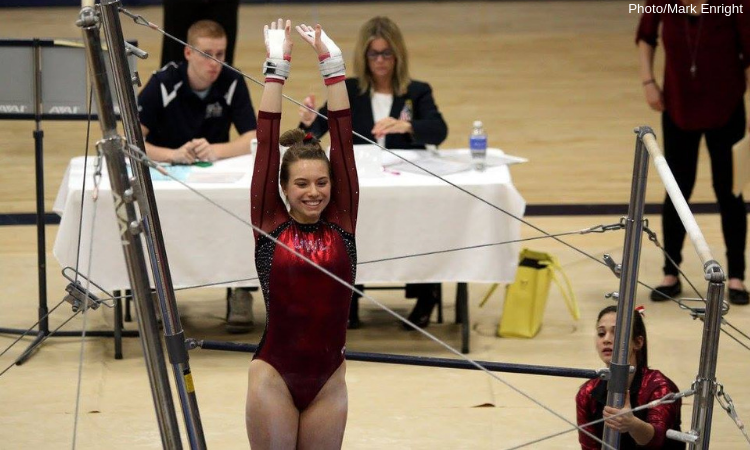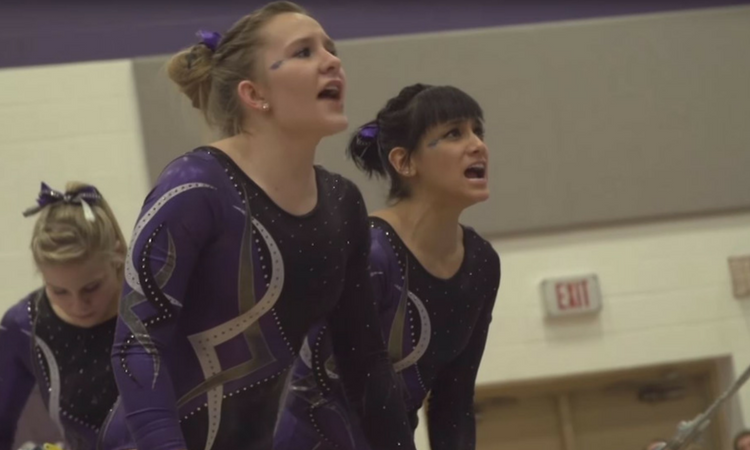When most people think of collegiate gymnastics, they think of the top teams in the nation, competing for the Division I national title. But that’s only one part of the sport. There are 15 teams in Division III. And while many of the rules and regulations are the same, there are a number of differences to understand before jumping into the 2018 season.
NCGA Nationals
For one, DIII gymnasts aim to compete at the NCGA Nationals. The NCGA national championships includes three teams from each conference, the WIAC and the NCGA East. Those teams qualify to NCGA nationals by placing in the top three at the respective championship meets. There are also individual qualifiers, who can qualify in the all around or on any of the individual events. Individual qualification to NCGA nationals is a bit more complex and is some combination of the score at the conference meet and the Season Average Score, or SAS. The SAS is an average of four scores, with one score coming from an away meet and no more than one meet coming from a DI/DII or non-conference meet. At the NCGA nationals, teams compete for a national title and the all around final on day one of competition and crown individual event champions on a second day.
Additionally, individual all arounders can still qualify to NCAA regionals via their all around score. It is rare for a DIII gymnast to qualify, but it does happen. Recent examples include Katie Fiorelli of Whitewater in 2015 and Ashley White of Centenary in 2017.
Routine Composition
A common misconception is that DIII gymnasts compete under a different code than DI, but DIII gymnasts actually have exact same rules—the difference being that the “up to the level” deduction is taken more frequently than with teams like Oklahoma or Florida. As a reminder, see the Balance Beam Situation college judging series for what the guidelines are to see what separates DIII teams. Commonly, some gymnasts are missing the release requirement on bars (single bar D release, two D+ releases or two E elements) or the requirement of bonus in the dismount. This can also factor in on floor, as some gymnasts do not have two D level skills in their routines. These differences in routine composition generate interest, as not all routines in have 10.0 starts and perfect composition (taken as a deduction, not start value). Some teams choose to prioritize difficulty and minimize these deductions while others seek to minimize risk and take lower start values and composition deductions.
Parity
A unique aspect in DIII gymnastics is the parity across the teams. Unlike DI, counting falls happens and teams have a much wider range of scores throughout the season. This leads to the part of DIII gymnastics that makes it fascinating to follow: parity. At any given dual meet, either team could feasibly win! This is apparent in qualifications to NCGA nationals as well—every year different teams make the championship, unlike with NCAA nationals where there is perhaps one or two new teams each year. While teams like Whitewater, Lacrosse and Brockport regularly make the big show, the remaining three vary every year with Ursinus, Stout, Springfield, Winona State, Cortland State and Oshkosh all qualifying since 2014.
Article by Morgan Bradford





One comment